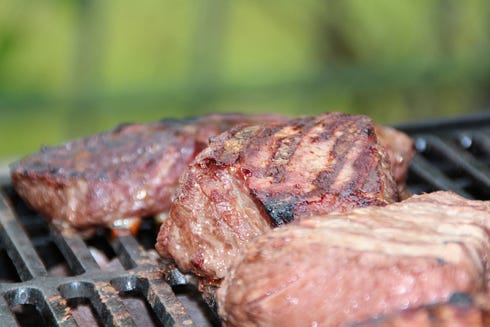
Whether you’re enjoying a barbecue outdoors, traveling to see family or friends, or spending time at home, the U.S. Department of Agriculture’s Food Safety and Inspection Service urges everyone to take food safety precautions when planning their Fourth of July menu.
The U.S. Centers for Disease Control and Prevention estimates that 1 in 6 Americans — that’s 48 million people — annually acquire foodborne illness, resulting in roughly 128,000 hospitalizations and 3,000 deaths.
“Because foodborne bacteria thrive and multiply more quickly in warmer temperatures, foodborne illness can spike during summer,” said Deputy Under Secretary for Food Safety Al Almanza. “This is likely because people are spending more time outside — away from the sink and equipment in the kitchen that help consumers keep food safe.”
The Danger Zone is the temperature range between 40 and 140 degrees Fahrenheit in which foodborne bacteria can grow rapidly to dangerous levels that can cause illness.
Here’s how to steer clear of the Danger Zone:
●Without refrigeration or a heat source, perishables should not be left out more than two hours if the temperature is at or below 90 degrees Fahrenheit, and only one hour if the temperature is at or above 90 degrees Fahrenheit. Since the weather will likely be hot on July 4, food should be returned to the cooler within an hour. If you are not sure how long food has been sitting out, throw it out immediately.
●Always keep cold food cold, at or below 40 degrees Fahrenheit, in coolers or in containers with a cold source such as ice or frozen gel packs. Keep hot food hot, at or above 140 degrees Fahrenheit, on the grill or in insulated containers, heated chafing dishes, warming trays or slow cookers. If food needs to be reheated, reheat it to 165 degrees.
●Pack an appliance thermometer in your cooler to ensure food stays at or below 40 degrees. Divide large amounts of food into shallow containers for fast chilling and easier use.
●Packing drinks in a separate cooler is strongly recommended, so the food cooler isn’t opened frequently. Keep the cooler in the shade, and try to cover it with a blanket or tarp to keep it cool. Replenish the ice if it melts.
●Use the food thermometer to check internal temperature of meat, poultry and seafood. You cannot tell whether the meat is safely cooked by just looking.
●If you plan to marinate meat or poultry for several hours or overnight before the event, marinate it in the refrigerator — not on the counter. If you plan to reuse the marinade from raw meat or poultry, boil it first to destroy any harmful bacteria.
●To ensure safety, leftovers must be put in shallow containers for quick cooling and refrigerated to 40 degrees Fahrenheit or below within two hours.
This article originally appeared on Crestview News Bulletin: 7 tips to avoid foodborne bacteria
